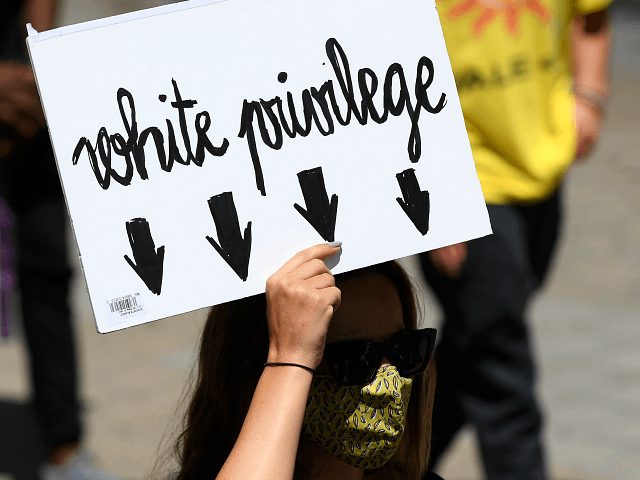An art teacher at TOPS at Seward School in Seattle, Washington, told her eighth-grade students that the concept of peace is “racist,” and that President Donald Trump is divisive, adding that some of her own art projects are “racist” and derived from “white privilege.” The teacher added that art history comes from a “European, euro-centric ‘white supremacist’ point of view.” Her rambling monologue was captured by a student who recorded the class Zoom session.
After tasking her students with creating a pen and ink drawing that incorporates the theme of peace, art teacher Suzanne Wakefield began talking about how she believes President Trump is standing in the way of world peace, according to a report by Jason Rantz at KTTH Radio.
“I might have been coming from a racist perspective with that whole theme,” said Wakefield of her own assignment.
On a recording of the Zoom class made by a student and posted to Facebook by Rantz, the teacher then began ranting about how she believes peace cannot exist if inequality and injustice exist at the same time, and eventually arrived at the conclusion that peace in itself may be a racist concept.
“I believe that peace can only happen when we have equality and justice,” she said. “We don’t have that. There’s groups of people that peace is like completely out of their realm. How can you have peace when we’re having like, just for an example, equal rights, human civil rights battles, because a lot of groups are not treated equally and that’s really coming across.”
“My perspective is coming from a white privilege. I’m a white person and I’ve been conditioned and I’m trying to un-condition myself,” Wakefield continued. “But I just wanted you guys to know that if you believe in peace, it could mean lots of different things.”
“But I also believe that peace is really not possible without equality and justice and that’s why you can have a peaceful protest and try to protest what’s going on in the world,” the teacher added. “But how can you feel peace when you’re a group from a minority or something that’s been oppressed and does not have the same privileges as white people do, you know?”
Wakefield then went on to tell her students that she may sometimes give them assignments “that might be kind of racist.”
“I don’t really believe that peace is possible, unless we have equal justice first, and that’s a fight that’s been going on for a long time,” said Wakefield. “So I just wanted you guys to know that I might give you guys things sometimes that might be kind of racist, and I’m admitting it, and I want to talk about it sometimes because it infiltrates every part of our life, okay?”
“And, you guys — there are people that do not have white privilege in our world, ya know?” she added.
Wakefield, who delivered this monologue without being interrupted or asked questions by any of her students, continued her tangent by then suggesting that the idea of “peace” is “racist.”
“I came from a place that had privileges that other people don’t have, you know?” she said. “So I recognize that that might have been sort of a racist idea, if you look at it, like, ‘Oh, peace is this cool thing that everybody can have, it’s beautiful, it’s lovely.'”
The art teacher then told her students that she has been trying not to teach them all about the art history that she herself has learned, as she believes is comes from a “European, euro-centric ‘white supremacist’ point of view.”
“I mean, it is kind of a vision but it also might be different depending on your perspective so, yeah, I just wanted to kind of clear that up,” she said. “The other thing was, I’m trying not to show you guys the art history that I learned, which is really coming from a European, euro-centric ‘white supremacist’ point of view.”
“Our country is divided, our leader is pushing that, he’s not an advocate for peace, our leader, or unity like Obama was,” added the teacher of President Trump. “Unity and peace, people coming together, which is really hard to do because there’s so many equality issues and injustice happening that people are fighting against.”
“There’s been leaders all through history that really advocate for peace,” continued Wakefield. “Gandhi was one of them, he had a whole movement for peace.”
The teacher then went on to recite lyrics from John Lennon’s song, “Imagine.”
“You know that song, ‘Imagine,’ by John Lennon?” said Wakefield, to which she appeared to receive no response from her students.
“You know, like, ‘You may say I’m a dreamer, but I’m not the only one, I hope someday you will join us and the world will be as one. Imagine no possessions, I wonder if you can. No need for greed or hunger, a brotherhood of man,'” she said.
You can follow Alana Mastrangelo on Facebook and Twitter at @ARmastrangelo, on Parler at @alana, and on Instagram.

COMMENTS
Please let us know if you're having issues with commenting.